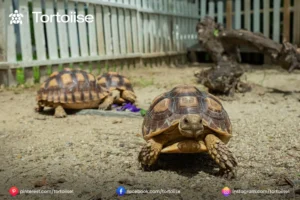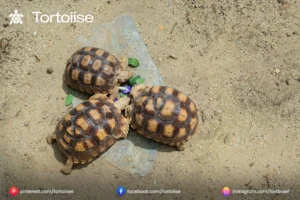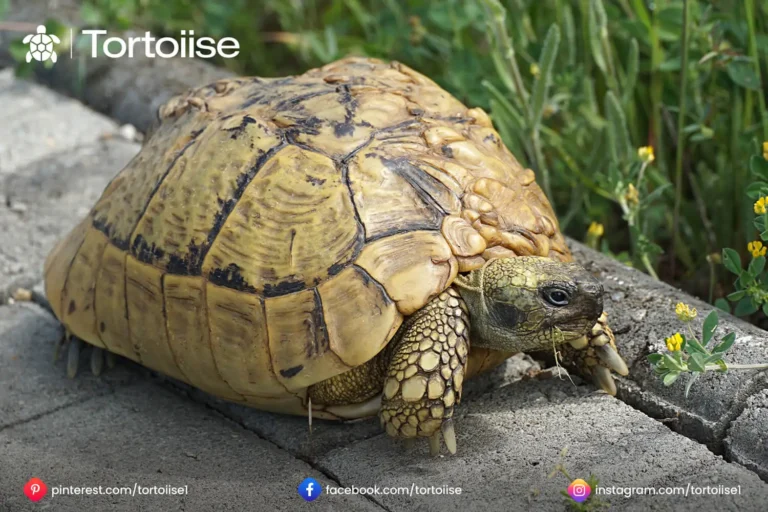How big to Russian Tortoises get: Size Guideline
How Large Do Russian Tortoise Get
A Thorough Aide Russian Tortoise, otherwise called Russian Tortoise, are a well-known decision among pet people because of their reasonable size, strong nature, and enchanting characters. Understanding their size, development designs, and the elements that impact their advancement is fundamental for giving legitimate consideration. This guide will dive into the actual attributes, development stages, and key consideration contemplations for Russian Tortoise.

Actual Qualities of Russian Tortoise
Russian tortoises are little to medium-sized tortoise, making them appropriate for both indoor and outside nooks. Here are the fundamental actual characteristics:
- Grown-up Size: Most Russian Tortoise arrive at a grown-up size of 6 to 10 crawls long, with females normally being bigger than guys.
- Weight: Grown-up tortoises weigh somewhere in the range of 1 and 3 pounds, contingent upon their size and well-being.
- Shell Shape: Their shells are domed, with a smooth surface and a hue that reaches from tan to dull brown, frequently including hazier patches.
- Life expectancy: These tortoises can live for 40 to 50 years with appropriate consideration, making their size stable for most of their lives once they arrive at development.
Development Phases of Russian Tortoise
Understanding the development periods of Russian tortoise helps in checking their turn of events, and it is flourishing to guarantee they.
Hatchlings
- Size: Hatchlings are around 1 to 1.5 crawls long.
- Weight: They weigh only a couple of grams at this stage.
- Care Concentration: Hatchlings are fragile and require exact temperature, moistness, and diet for the board to advance sound development.
Adolescents
- Size: When they arrive at one year old enough, adolescents develop to around 3 to 4 crawls long.
- Development Rate: Russian tortoises develop consistently during their initial 5 years.
- Shell Improvement: Their shells start to solidify and foster the trademark domed shape.
Grown-ups
- Size: Grown-ups arrive at their regular somewhere in the range of 5 and 10 years, contingent upon variables like eating routine and living space.
- Gender Dimorphism: Females are normally bigger than guys, comparing 10 inches, while guys commonly stay around 6 to 8 inches.
Factors Impacting Development
A few variables can impact the size and development pace of a Russian tortoise
Hereditary qualities
- Acquired Characteristics: The hereditary cosmetics of a turtle assume a critical part in deciding its definitive size. Turtles with bigger guardians are probably going to develop bigger themselves.
Diet
- Calcium and Nutrients: Sufficient calcium admission is essential for shell and bone wellbeing. Enhancing their eating routine with calcium powder and UVB openness guarantees legitimate development.
- Adjusted Diet: Russian Tortoise flourish with an eating regimen of mixed greens, vegetables, and intermittent blossoms. Abstain from overloading high-protein food varieties, as these can prompt strange development and medical problems.

Territory
- Space: Satisfactory room is fundamental for sound development. Nooks that are too little can confine active work and development potential.
- Temperature and Lighting: Keeping a lounging spot of 90°F to 100°F and giving UVB lighting upholds development by helping processing and calcium retention.
Wellbeing and Parasites
- Sickness: Conditions like respiratory diseases or shell decay can ruin development. Standard wellbeing checks and spotless natural surroundings are fundamental.
- Parasites: Inside parasites, like worms, can influence supplement retention, hindering development. Routine waste tests and deworming medicines, as recommended by a veterinarian, are significant.
Checking Development and Wellbeing
Normal observing of your Russian tortoise development is fundamental to guarantee they are flourishing. Here are a few hints:
Estimating Length
- Strategy: Utilize a ruler or caliper to quantify the straight-line length of the shell from head to tail.
- Recurrence: Measure month to month during the initial not many years, then, at that point, every year once they arrive at adulthood.
Following Weight
- Instruments: Utilize a computerized scale to gauge your tortoise.
- Cautioning Signs: Unexpected weight reduction or inability to put on weight could show medical problems.
Shell Condition
- Really take a look at Routinely Investigate the shell for breaks, weaknesses, or staining, which could flag issues like metabolic bone illness or contamination
Lodging Necessities for Developing Tortoise
Giving proper natural surroundings is essential for supporting your Russian tortoise development and, generally speaking, its well-being.

Fenced-in area size
- Indoor: at least 8 square feet is suggested for a solitary grown-up, with bigger nooks liked.
- Outside: For open-air lodging, guarantee a solid, hunter-resistant area of no less than 16 square feet.
Substrate
- Decisions: Utilize a combination of coconut coir, natural dirt, and cypress mulch to impersonate their indigenous habitat.
- Profundity: Guarantee the substrate is profound enough for digging and tunneling, as Russian Tortoise appreciate making shallow tunnels.
Temperature and Lighting
- Luxuriating Spot: Keep a relaxing region at 90°F to 100°F.
- Cool Side: Keep a cooler region somewhere in the range of 70°F and 80°F.
- UVB Lighting: Supplant UVB bulbs every 6 months to guarantee viability.
Normal Misguided Judgments About Russian Tortoise Size
Legend: Russian Tortoise Stay Tiny
While Russian tortoises are viewed as little contrasted with other tortoise species, their grown-up size of 6 to 10 inches still requires an open nook and legitimate consideration.
Legend
Development Stops at a Particular Age
In spite of the fact that development eases back fundamentally subsequent to arriving at development, Russian Turtles can keep on developing gradually all through their lives, particularly assuming circumstances are great.
Fantasy
More modest tortoise is simpler to really focus on.
Despite size, Russian Tortoise require particular consideration, including appropriate eating regimens, UVB lighting, and living space upkeep.
Deep-rooted Care for Russian Tortoise Russian tortoises are seemingly perpetual pets that can flourish for a really long time with the right consideration. Their size makes them sensible; however, it additionally highlights the significance of appropriate lodging, diet, and wellbeing observing. By understanding their development examples and addressing their necessities, you can guarantee a cheerful and solid life for your tortoise.
End
Russian Tortoise are little, however strong, animals that spellbind pet people with their appeal and strength. Developing to a typical size of 6 to 10 inches, they are a fantastic decision for those ready to give reasonable natural surroundings, adjusted diet, and legitimate medical services. By finding out about their development examples and elements that impact their size, you can offer the most ideal consideration for your shelled friend. Keep in mind, a very, really liked Russian tortoise can turn into a loved relative for quite a long time.


